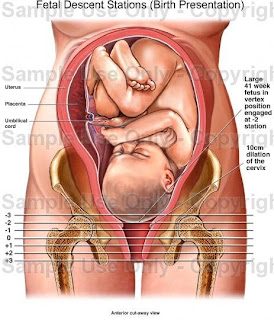
You may have an easier time breathing when your baby starts to drop down into your pelvis. Because of this anxiety I do not think.
Many women find that their health care providers may start doing pelvic exams at about 37 weeks gestation.
36 week pelvic exam. They dont NEED to do a pelvic exam for any real reason. Some doctors still do them routinely starting at 36 weeks just to check your cervix for effacement and dilation -. So i have my 36 week pelvic exam and I m very scared.
I am worried that it will hurt a lot. I read that if you are relaxed enough then it should be alright. Because of this anxiety I do not think.
Why Are Pelvic Exams Offered. In most cases an examination to do a pap smear and other tests will be performed early in pregnancy. If there are no complications during pregnancy usually there will be no further exams until around 36 weeks.
After this time its common for practitioners especially in the US to do exams at every visit during the rest of the pregnancy. The rationale for this. Pelvic Exam at 36 weeks.
My first uncomfortable one was todayim 40 weeks exactly. Ive been having them weekly since 36 weeks and they werent terrible. I think you just have to stay as relaxed as possible and i think it depends on your doctor and how forceful they are.
This week your healthcare practitioner may begin vaginal or internal exams. Internal exams check your cervix for effacement and dilation as well as babys position in the birth canal. Not all providers begin these exams at week 36and not every pregnant woman wants them at this point in pregnancy.
If you arent comfortable with this exam you are within your rights to decline it. Most practitioners do an initial cervical exam at the beginning of pregnancy to perform a Pap smear and other tests. Then no further cervical exams are performed until about the 35 - to 37 -week mark unless complications arise that call for further testing or to assess the cervix.
The ob-gyn practice currently checks weekly starting at 36 weeks I know this doesnt seem like a best policy but it would be great to have evidence to reference when I decline This is a great question and its one I get all the time not just from moms who are pregnant but also from doulas child birth educators midwives. Then lets see how to deal with it - the pelvic pressure at 36 weeks so you can continue to prepare for you babys birth. Positives at 36 Weeks Gestation.
At this point in your pregnancy there are a lot of positives. The baby is now about 18-19 inches long and can weigh as much as 6 pounds. The fuzzy lanugo and creamy vernix that has protected your baby from the amniotic fluid is.
At 36 weeks they do another pelvic exam. From then on they do 1 a week. Make sure at 36 weeks they check you for strep b.
All they do is take a cotton swab to your vagina and anal areas. 36 Weeks Pregnant. Feeling Pelvic Pressure When youre 36 weeks pregnant youre almost at full term and your baby weighs about 6 pounds and measures roughly 185 inches long.
They may also use ultrasound or a pelvic exam to determine the positioning. Ideally at 36 weeks a fetus will be facing head down. Doctors call this position vertex.
Pregnancy symptoms during week 36. Now that your baby is taking up so much room you may have trouble eating a normal-size meal. Smaller more frequent meals are often easier to handle at this point.
You may have an easier time breathing when your baby starts to drop down into your pelvis. What age should your daughter start receiving their exams from their physicians. Honaker talks with us about this and much more.
Many women find that their health care providers may start doing pelvic exams at about 37 weeks gestation. Women should consider asking their doctor or midwife whether these exams are necessary to insure the health and safety of herself and her baby before providing consent for this invasive procedure. When I discuss these near term cervical exams with my childbirth class students and look at the studies mothers-to-be have to ask themselves whether the benefits of weekly exams.
Fetal presentation should be assessed by abdominal palpation at 36 weeks or later when presentation is likely to influence the plans for the birth. Routine assessment of presentation by abdominal palpation should not be offered before 36 weeks because it is not always accurate and may be uncomfortable. Pelvic exams are invasive and require discussion with the patient prior to beginning.
This should include the rationale for the exam the steps involved so that they know what to expect and obtaining their verbal consent prior to proceeding. Even if someone has had a pelvic exam in the past its important to not make assumptions. The patient can opt out though its relevant to try to.
F For women at high risk cervical cultures for gonorrhea and chlamydial infection are repeated at 36 weeks. G Ideally pelvic ultrasonography is done in the 2nd trimester between 16 and 20 weeks. It is not obtained routinely by all practitioners.
Slight spotting after a pelvic exam happens only once or lasts less than 2 days Pregnant more than 36 weeks term and passed a small glob or chunk of mucus. Over 36 Weeks Pregnant Term and Passed Mucus Plug. What You Should Know.
Many women will pass a small glob or chunk of jelly-like mucus at the end of the pregnancy. It may look like gelatin or snot.
